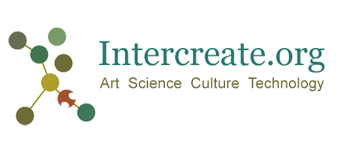Wai (for ISEA 2012 Albuquerque)

Te Hunga Wai Tapu consists of: Dr Te Huirangi Waikerepuru, Te Urutahi Waikerepuru, Ian Clothier, Jo Tito, Craig Macdonald, Julian Priest, Sharmila Samant, Leon Cmielewski, Josephine Starrs, Andrew Hornblow, Darren Robert Terama Ward, Johnson Dennison, Andrew Thomas, Dugal McKinnon, Sophie Jerram and Gordon Bronitsky. Aerial imagery courtesy of Land Information New Zealand.
There are five components to the Wai project. Te Iarere (communication across vast distances) involves data from a tree in Opunake, New Zealand Aotearoa. Tree voltage, temperature and light are measured. The live data readings control audio played in the exhibition space. Ian Clothier conceived and directed Te Iarere. Andrew Hornblow made the custom data sensors. Julian Priest and Adrian Soundy created the web interface. Darren Robert Terama Ward is a Maori musician who plays self made traditional instruments and Andrew Thomas is a Navajo musician specialising in the flute.
The second component is Pou Hihiri (the womb of the universe). The Pou is encapsulated in vinyl graphics, contains woven LED’s and has an audio component. Conceived and directed by Te Urutahi Waikerepuru, Craig Macdonald made the Pou graphics and structure with audio by Dugal McKinnon and Sophie Jerram.
Video is the third component. Indian video artist Sharmila Samant has contributed The Wasteland, an exploration of Wai in New Zealand. The Maori expression for ‘Who are you?’ is ‘Ko wai au’ which literally means ‘of whose water are you’ and is understood by Maori to mean ‘of whose ancestors are you?’ Jo Tito, a contemporary Maori artist currently studying science has made two videos of Wai, which play inbetween The Wasteland and Ruamoko. Ruamoko is made by the Institute of Geological and Nuclear Sciences in New Zealand Aotearoa, and explores both Maori and Western scientific views of earthquakes and volcanoes, the result of of flow phenomena in the Earth.
Julian Priest contributed Sink a model of anthropogenic ocean acidification. A conceptual work, carbon dioxide exhaust gasses are piped into a tank containing brine. Carbonic acid is formed, increasing acidity, which dissolves a scallop shell in the tank.
The fifth component is an animation and audio work by Leon Cmielewski and Josephine Starrs Puwai Rangi Papa. Projected onto the floor, the words of Te Huirangi Waikerepuru are etched into the mountain landscape of his home – Taranaki Maunga (mountain).
Wai is supported by:










